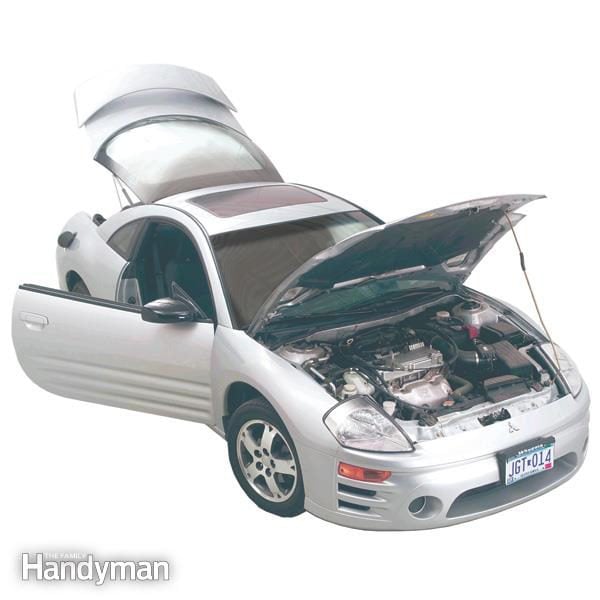
How To Lubricate Car Locks, Hinges and Latches: A Step-By-Step Guide
By the time you start hearing squeaks and groans whenever you open your door, hood, gas tank lid or trunk, the new-car thrill has probably faded. We’ll help you recapture some of that new-car feel with a few simple lubricating techniques. With just 10 minutes twice a year, you can quiet those pesky noises and avoid costly repairs. All you need are a variety of inexpensive lubricants, which will come in handy for household problems as well. White lithium grease is good for metal-to-metal joints like hinges and latches, which need a clinging grease to repel water and hold up under harsh conditions.
WD-40 is for light-duty lubrication and freeing up sticking or partially rusted hinges and latches. (Don’t miss these other great uses for WD-40.) Silicone spray is great for lubricating nylon, plastic and metal when only a thin layer of lubricant is necessary. And because silicone dries, it won’t get clothing greasy. Graphite lubricant is the right choice for locks-it won’t attract dirt to fine lock mechanisms like an oil would.
Tools and materials required for this project:
- Rags
- Graphite lubricant
- WD-40
- White lithium grease
- Silicone spray
Are those noises coming from under the hood? Here are nine strange car sounds—and what they could mean.
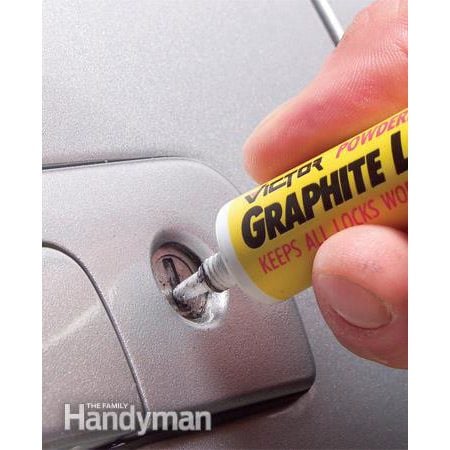
Oil Door Locks
We don’t think much about our car door locks until the key breaks off in the cylinder. Keep these delicate mechanisms moving freely with a blast of dry graphite powder. You may need to push the dust protector flap back slightly with a small metal nail file to get at the lock. A quick pump of the tube will dispense enough graphite. Move the lock cylinder with your key several times to work the graphite into the mechanism. Do this to your trunk lock as well. These often-overlooked services can extend the life of your vehicle.
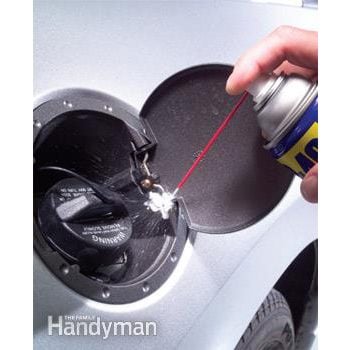
Oil Gas Tank Lid
Your car’s gas tank lid really takes abuse, especially in salty environments. Give it a squirt of WD-40 a few times a year to keep it from rusting. Wipe away any excess to keep it from dripping onto your car’s finish.
Here are four popular rust-proofing options on the market—along with tips on what’s best for your budget.
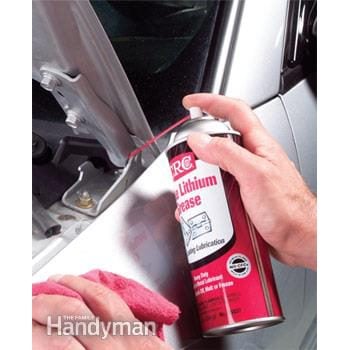
Oil Hood Hinges
Wipe the hinge area with a clean rag and spray it with white lithium grease or a few drops of ordinary motor oil. Move the hinge several times to work the grease into the hinge. Be sure to get it into both sides of each hinge. Wipe away the excess to keep it from collecting debris.
While you’ve got the hood raised, try this simple hack—you’ll never miss another oil change!
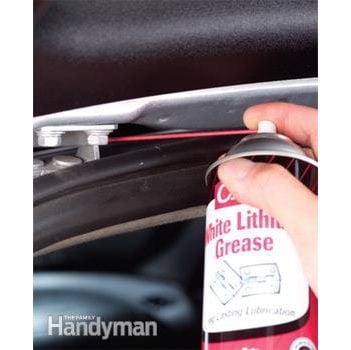
Oil Trunk Hinges
Lubricate the trunk hinges using the same method you used for the hood hinge. Don’t lubricate the gas struts that slow the trunk movement (you could ruin them—in which case, you’d need these step-by-step instructions for replacing gas lifts).
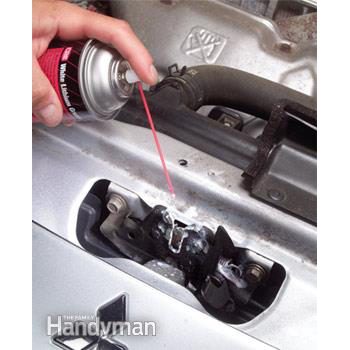
Oil Hood Latches
Wipe the grime and dirt away with a clean cloth. Try to get any bits of sand that may be embedded in the existing grease. If you see rusted or stuck parts, give the latch a spray of WD-40, then move the mechanism several times. Wipe it again and give it a liberal coating of white lithium grease. Here are more car maintenance jobs you can do yourself.
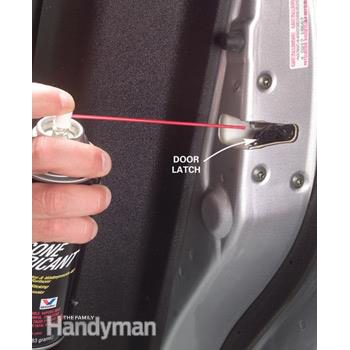
Oil Door Hinges And Latches
If the door squeaks every time you open it, the hinges could be bound by corrosion. If so, squirt the hinges with WD-40 to free them, and move the door several times to work in the lubricant. Once the hinges are in working condition, just squirt them with white lithium grease or motor oil, operate the door several times and then wipe any excess away. Check the door latch for corrosion. Many door latches now have a nonmetallic composite mechanism, which should be lubricated with a shot of silicone spray.
Could those annoying noises you’re hearing be a red flag for a bigger issue? Here are 14 sure signs your car is about to die.